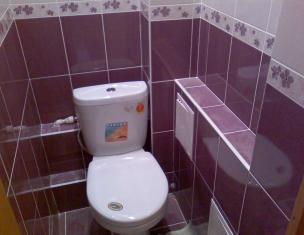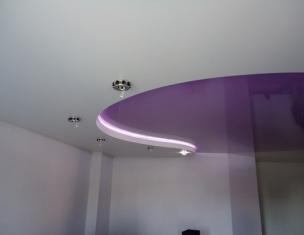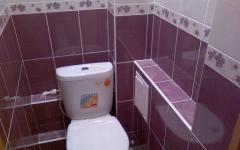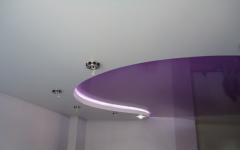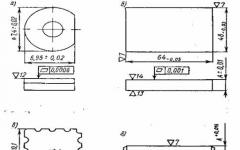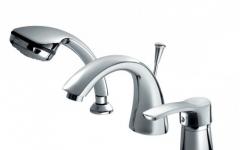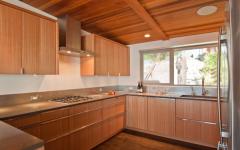From the author: Hello, dear reader. Surely you have heard many sarcastic jokes about the strained relationship between a son-in-law and his mother-in-law. So, this is not about me! My mother-in-law loves and respects me very much, and even entrusted me with a major renovation of her apartment. True, at my expense. So, today I want to tell you about how to renovate the floor in an apartment with your own hands. This is how you can save both on materials and on attracting specialists. I guarantee that this knowledge will be useful to you more than once in life.
In old houses, as in my case, the floors are made according to the standard scheme: the floor slabs are covered with expanded clay, and on top they are filled with a layer on which thermal insulation is laid. In many old houses, as a rule, it has long fallen into disrepair or is completely absent. After thermal insulation comes the flooring on which the flooring is laid.
If this floor is laid according to all the rules, then it can last for a very long time. If the floorboards have become deformed from age and gaps have appeared between them, this is a clear sign that the floors need to be replaced. You can't just replace the flooring here. A worn-out wooden floor will quickly render your new linoleum or laminate flooring unusable. To prevent this, you will have to completely repair the old floor using one of the following methods:
- replacement and repair;
Method 1. Repairing an old wooden floor

This option is suitable for you if you only need to replace worn floorboards and strengthen loose ones. In my case it also turned out to be acceptable. Here is a diagram of a major overhaul of an old wooden covering:
- clean the floorboards of old paint or varnish. To do this, it is best to use a grinding machine;
- replace old, worn-out boards with more reliable ones;
- check the method of fixing the boards to the joists. In most cases, they are nailed, but for a more secure fixation, use self-tapping screws;
- Use wood putty to cover the cracks, holes and recesses and rub these places with sandpaper;
- remove small debris using a vacuum cleaner and then a damp cloth;
- apply paint/varnish to the repaired floor;
- lay the floor covering.
If most of the floorboards have become unusable, a reasonable solution would be to replace the entire floor. Modern technologies make it possible to create a truly reliable, environmentally friendly and durable structure.
Thanks to the tongue and groove, the boards are tightly connected to each other. You can even strengthen the joint with glue. After installation, all you have to do is select and lay the covering. We will talk about the advantages and disadvantages of each type of flooring later. Now let’s look at the method of pouring a concrete floor.
Method 2. Pouring a concrete floor
If your old wood floor is in critical condition, simply replacing the boards and puttingty will not do. In this case, you can fill the concrete screed yourself. The most important thing in this option is to achieve a perfectly flat surface, because unevenness can lead to undesirable consequences, for example, deformation and damage to the floor covering.

Here is a diagram of the preparatory work:
- dismantle the old wooden floor. Remove floorboards and joists completely;
- remove debris from the underground space by cleaning the old screed or ceiling;
- lay down waterproofing. For this, plastic film is usually used;
- Apply damper tape along the walls. Sometimes they do without it, but this reduces the reliability and durability of the concrete floor;
- since you are repairing the concrete surface yourself, be sure to use guide beacons;
- fill the base with expanded clay. This material is relatively light in weight and has good thermal insulation properties. In principle, you can do without it, but with large differences in height or when using gypsum fiber sheets, expanded clay is necessary;
- perform reinforcement. As a rule, reinforcement is used when pouring the foundation and the floors themselves. But to strengthen a concrete floor, reinforcement will certainly not be superfluous.
There are several ways to fill the floor: 
- pouring cement-sand mixture. The pouring process itself is quite hard work, and the solution will harden within a month. But you will be pleased with the low price of the issue. In addition, this method has been used in construction for a very long time, therefore it is considered reliable and proven;
- filling with dry cement mixture. If you choose this method, the work will not be so hard. And the hardening process will not be so long - up to 10 days. The process of leveling the surface with this filling method is much simpler. But be prepared for the price to increase proportionally;
- laying gypsum fiber sheets or gypsum fiber boards. In construction, the name “dry screed” is also used. When using GVL, you will get an almost perfect result with minimal labor costs. The only disadvantage of this option is the high price, but it is quite justified.
Now about flooring
Construction stores offer us a wide selection of floor coverings, which differ in their characteristics and price. This includes parquet, laminate, linoleum, carpet, the newfangled Art Vinyl coating, and various types of floor tiles. Let's talk about the properties of each of the listed floor coverings:

- parquet board. The covering is made of natural wood, making your floor aesthetically attractive and environmentally friendly. If necessary, the parquet board can be easily dismantled and then re-installed. In order for parquet to maintain its original appearance, it requires special care. In addition, it is sensitive to changes in temperature and humidity. Parquet boards should be laid in dry, ventilated areas. Therefore, this is not the best solution for a kitchen, hallway or bathroom;
- laminate. Unlike parquet, a laminate board consists of four layers: stabilizing, load-bearing (the lock is built into it), decorative (wood pattern), and top protective. Laminate is more unpretentious and does not require special care, like parquet, but it is afraid of moisture. For home use, the optimal solution would be class 31-32 laminate. Suitable for installation in almost any room except the bathroom;
- linoleum. Universal floor covering. Can be on a foam or felt base. The foam base is not sensitive to moisture and is suitable for any room. Felt provides additional warmth and sound insulation, but is not suitable for rooms with high humidity. But for a living room or bedroom, linoleum on a felt base will be the optimal solution. For home use, household and semi-commercial linoleum is suitable. For rooms with low traffic, for example, a bedroom, 0.1-0.2 mm of a protective layer will be sufficient. A protective layer of 0.3 mm is suitable for the living room, and from 0.4 to 0.6 for the hallway and kitchen. The higher the thickness of the protective layer, the more durable the floor covering. For more reliable fixation, linoleum should be glued to the surface;
- carpet Consists of four layers: secondary base, fixing layer, primary base, pile. Has good heat and sound insulation. It is sensitive to moisture, so it is suitable for installation only in dry rooms with low traffic. In the kitchen and hallway, carpet will quickly wear out and lose its aesthetic properties;
- art vinyl. A new-fangled floor covering that allows you to implement almost any design solution. Externally, art vinyl can be stylized as wood, stone or other natural material. According to the manufacturers, it combines the aesthetic qualities of parquet, the practicality of linoleum (not afraid of moisture) and the modularity of floor tiles. For installation, simply glue the art vinyl tiles to a clean, flat and dry surface. For such versatility you will have to pay extra - the cost of the material exceeds the price of linoleum and laminate;
- floor tiles. Ideal for rooms with high humidity, easy to clean, so it will be the best solution for a bathroom or kitchen.




